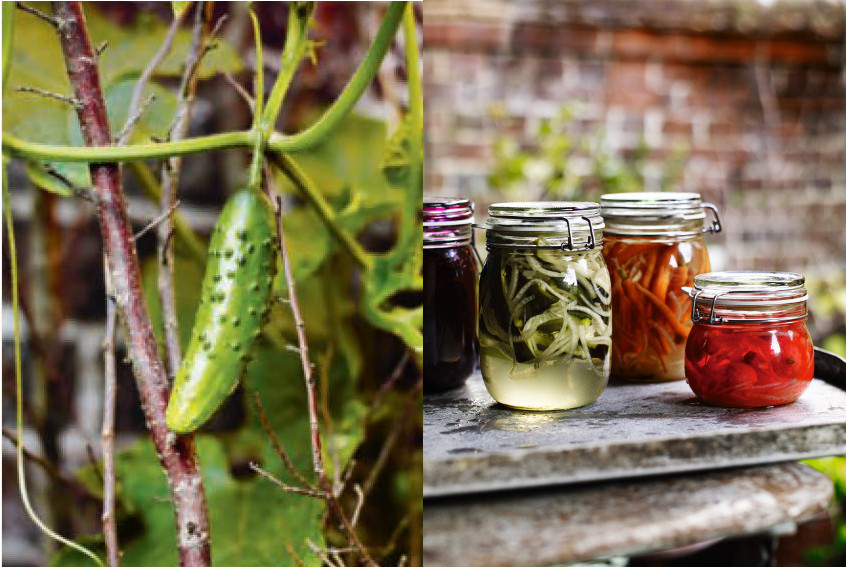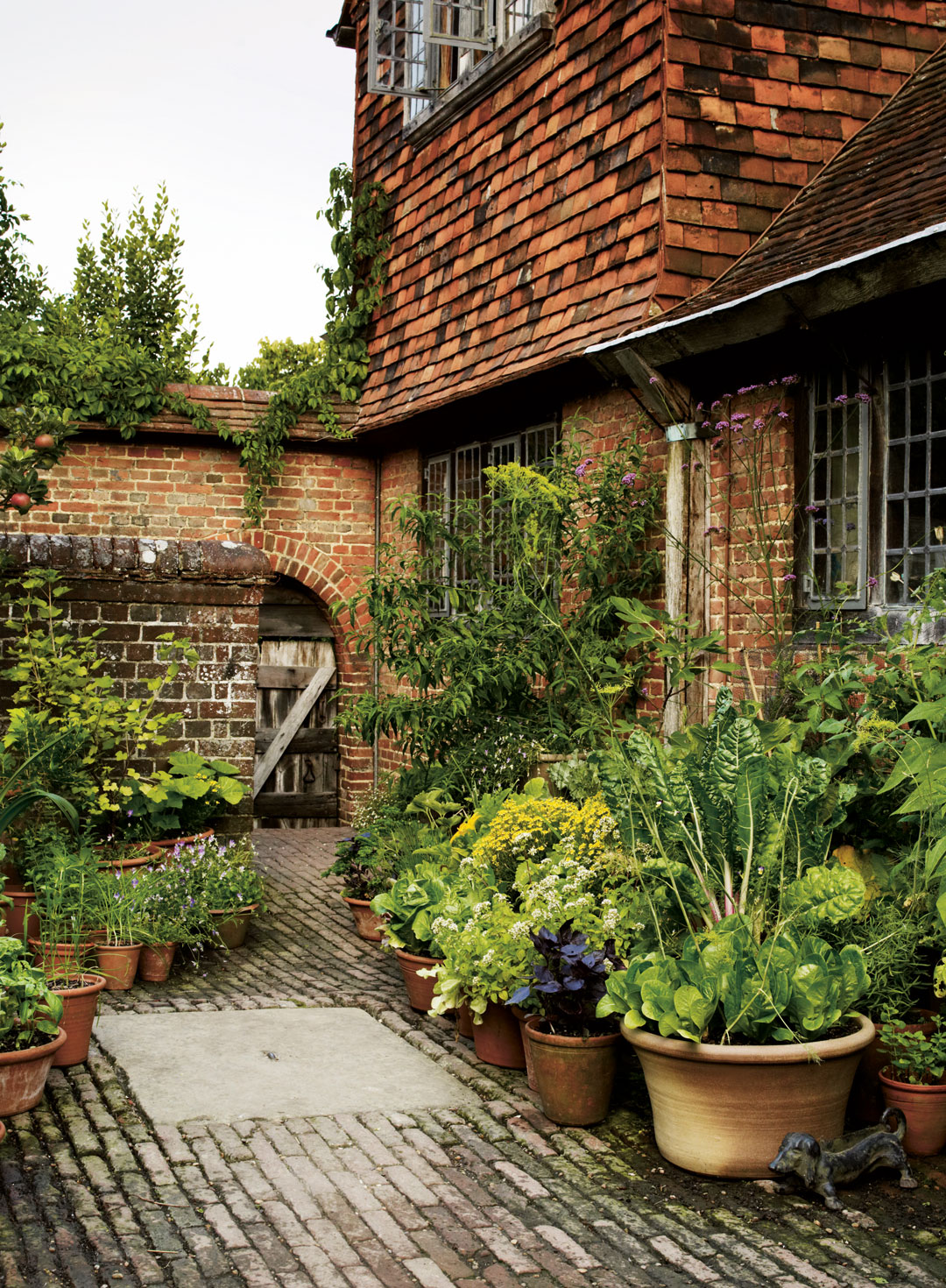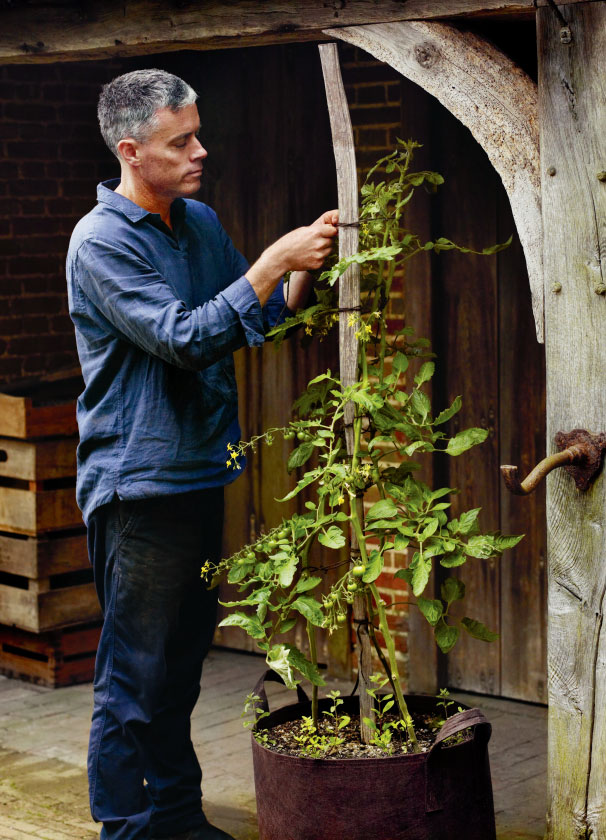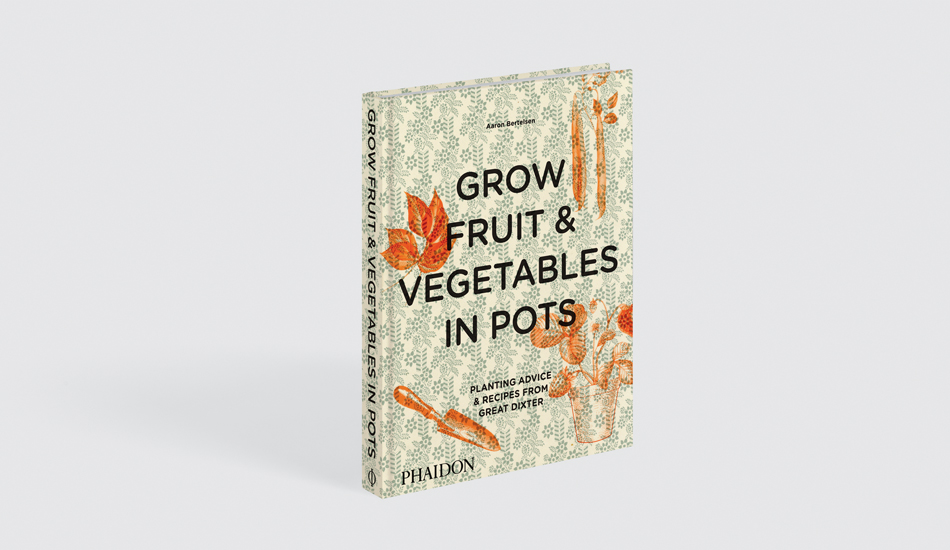
From Pot to Plate: How to grow and cook cucumbers
You don't actually need a garden to grow beautiful and tasty fruit and vegetables says Great Dixter’s Aaron Bertelsen
Aaron Bertelsen, the vegetable gardener and cook at the beautiful English country house Great Dixter, knows his ingredients inside and out. If you’ve visited this wonderful, architecturally significant place, a couple of hours south of London, you may well have admired Bertelsen’s fruit and vegetable beds which lie close to the house, or enjoyed the fruits of his labours in Great Dixter’s café – or Refreshment Loggia, as it is known on site.
However, you may not have come across Bertelsen’s kitchen courtyard garden. This brick-floored patch immediately outside the kitchen began as a kind of afterthought, but has since blossomed into a highly versatile, handsome and useful undertaking. In earthenware containers, he has grown everything from lemons to carrots here, each passing from the courtyard, into the kitchen, and perhaps occasionally ending up in Bertelsen’s own mouth.

Yet, there is one exception. “I would like to make it clear from the outset that I do not eat cucumber,” he says in his new book Grow Fruit & Vegetables in Pots. “Like all the men in my family, I find it impossible to digest. But strange as it may seem, I do not let that stop me growing these annual plants,” he goes on. “They are such a good-looking crop, adding height and presence to the vegetable garden – and, of course, many of my guests do enjoy eating them.

“Given a warm spot and sturdy support from pea sticks or trellis, cucumbers will grow very happily in a pot,” Bertelsen explains. “You could even grow one up a fruit tree. Ardent cucumber fans can put two or three next to each other to create a screen – handy if you do not like your neighbours.”
The gardener and cook suffers from no such problems, though he has overcome other difficulties. “Like all fleshy-stemmed plants, cucumbers can be prone to rotting if overwatered,” he says. “Limit your watering to once every three or four days when the plants are small, increasing the frequency as they grow and the fruits start to form. Powdery mildew can be a problem later in the summer, but while it might make the plant look less attractive, it will not affect the fruit.”

Once harvested, Bertelsen likes to pickle cucumbers – a preservation method he also uses for his beetroots (beets), carrots and radishes. "I love to eat these pickles with a dollop of yogurt or sour cream as a salad or side dish,” he says, “great with leftover meat, or added to a salad.”
To make a full complement of Bertelsen’s pickles, you’ll need 1 kg/2¼ lb small raw beetroot (beets); 350 g/12 oz baby carrots; 500 g/1 lb 2 oz radishes; 2 small ridge-style cucumbers, halved and cut lengthwise into wedges; 2 large sweet white onions, also halved and thinly sliced. As for the pickling liquid, you’ll need 750 g/1 lb 10 oz (3¾ cups) caster (superfine) sugar; 750 ml/1¼ pints (3 cups) raw (apple) cider vinegar; and 5 cloves.
Put the beetroot (beets), carrots and radishes into separate pans of boiling water and cook until they are only just soft to the point of a knife. Drain and set aside to cool. When the beetroot is cool enough to handle, rub off and discard the beetroot skin. Make the pickling liquid, by putting the sugar, vinegar and 750 ml/1¼ pints (3 cups) of water into a pan. Slowly bring to a boil, stirring now and then to dissolve the sugar, then remove from the heat, add the cloves and let cool slightly. Pack the beetroot, carrots, radishes and cucumbers into individual warm, sterilized Kilner jars, top with the sliced onions and pour in enough pickling liquid to cover the vegetables generously. Seal immediately and leave for at least 24 hours so the flavours can come together.

There, you’ve gone from pot to plate! For a more detailed version of this recipe, as well as much more besides, order a copy of Grow Fruit & Vegetables in Pots.